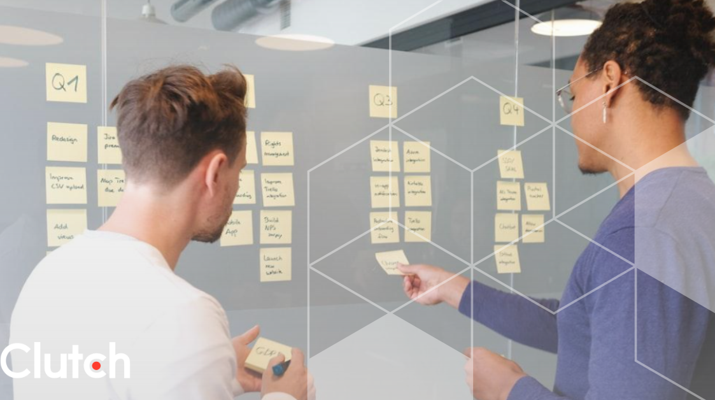

Updated December 19, 2024
Learn how organizations are leveraging technology, data-driven insights, and agile methodologies to build a resilient and adaptable workforce.
With every new year, businesses should be forecasting their workforce planning.
Workforce planning refers to the process of analyzing your business goals and how your current workforce and potential new hires can meet them. This means your business should know who you need to hire, how to retain your current talent, and your growth goals each year.
Most businesses rely on talent, but oftentimes that is overlooked for other success metrics.
This article will dive into strategies for effective workforce planning and how your business can include some of these action plans in your current strategy.

Remote and hybrid work arrangements have influenced modern workforce planning. These changes include productivity and engagement shifts, the impact on human resources, and considerations for managing remote teams.
The rise of hybrid work has contributed to empowering employees to develop a better work-life balance, ultimately impacting how organizations manage and plan their workforce.
One key strategy involves setting clear communication guidelines to ensure effective interaction among team members, regardless of location. Companies should also establish clear expectations and goals while providing their teams with the right level of support.
Cybersecurity is also a factor to consider for companies looking to fully embrace hybrid work. Teams must ensure policies are in place for company equipment and other factors that contribute to a secure and efficient remote work environment.
These strategies and practices reflect the evolving landscape of workforce planning in response to the challenges and opportunities of remote and hybrid work arrangements.
As organizations continue to navigate this transition, the effective management of remote and hybrid teams will remain a critical aspect of workforce planning.
Data analytics and AI is helping companies optimize their workforce planning processes.
AI technologies and insightful data empower organizations to plan their workforce needs more accurately while making data-driven decisions for optimizing workforce planning strategies. Additionally, AI-driven data analytics significantly enhance workforce planning and talent management by providing valuable insights and automating processes.
Organizations can make informed decisions to attract and retain top talent by utilizing data-driven talent acquisition strategies.
This approach involves leveraging data analytics to bolster skill-building, improve candidate experiences, optimize recruitment workflows, and align talent acquisition strategies with organizational goals.
Because of market shifts and uncertainties, your company’s workforce planning must be agile and flexible.
An agile workforce is full of adaptable employees who can quickly respond to changing business needs and market demands. This involves adjusting resources, skills, and capacities. This type of strategic workforce planning might seem daunting, but employees are encouraged by the opportunity to learn more.
A flexible approach increases employee opportunities for greater talent diversity, which enhances productivity and encourages retention.
Flexible workforce planning allows organizations to proactively implement strategies that promote work/life balance, reduce stress and burnout, and boost employee job satisfaction.
Strategic directions for companies or stakeholders can change - but your current employees will always appreciate the opportunity to learn more while meeting business objectives.
Creating an inclusive and diverse workforce goes beyond a business strategy – it is necessary today.
Diversity, Equity & Inclusion (DEI) is a framework within a business that encourages complete participation and a welcoming environment for individuals from all backgrounds.
There are many ways to incorporate DEI initiatives into your business strategy, but first, your company needs to clearly define and set goals to showcase your commitment. Another opportunity that falls within your current employees is to get their feedback on how your company currently approaches the topic. They also have their own perspectives and ideas that could benefit future workforce needs.
To fully integrate DEI initiatives into your workforce, companies (and HR leaders) can focus on staffing needs of diverse skill sets, promote diversity through policies, offer professional development for employee development & performance management, embrace Employee Resource Groups (ERGs), and address any implicit bias within the organization.
With DEI, organizations must practice what they preach. Your organization’s actions should align with its values.
All workforce planning should emphasize continuous learning and skills development as an organizational strategy.
Upskilling: The process of acquiring additional education or training to expand an individual’s existing skill set.
Reskilling: The process of learning new skills or competencies that are distinct from an individual’s existing skill set.
When focusing on upskilling and reskilling within the context of workforce planning, organizations can achieve this by identifying skill gaps, tailoring training programs, encouraging transparent dialogue, and making resources for the right skills accessible to the current number of employees.
It is also important to ensure that all upskilling and reskilling initiatives align with the organization’s overall business and strategic goals. This will ensure that your talent pool is equipped to meet the demands of an evolving business while finding areas for talent gaps that your HR team can fill.
Ensure that your organization remains adaptable and well-equipped to navigate the ever-changing landscape of the modern workplace.
As organizations continue to adapt to changes, the significance of workforce planning in driving organizational success becomes increasingly apparent.
Consider the following with your company’s future workforce planning:
In conclusion, the future of workforce planning will be defined by its ability to adapt to the changing landscape of work, prioritize the well-being and engagement of employees, and leverage technology to foster collaboration and productivity.
By embracing these principles, organizations can drive success in an increasingly dynamic and diverse work environment.


